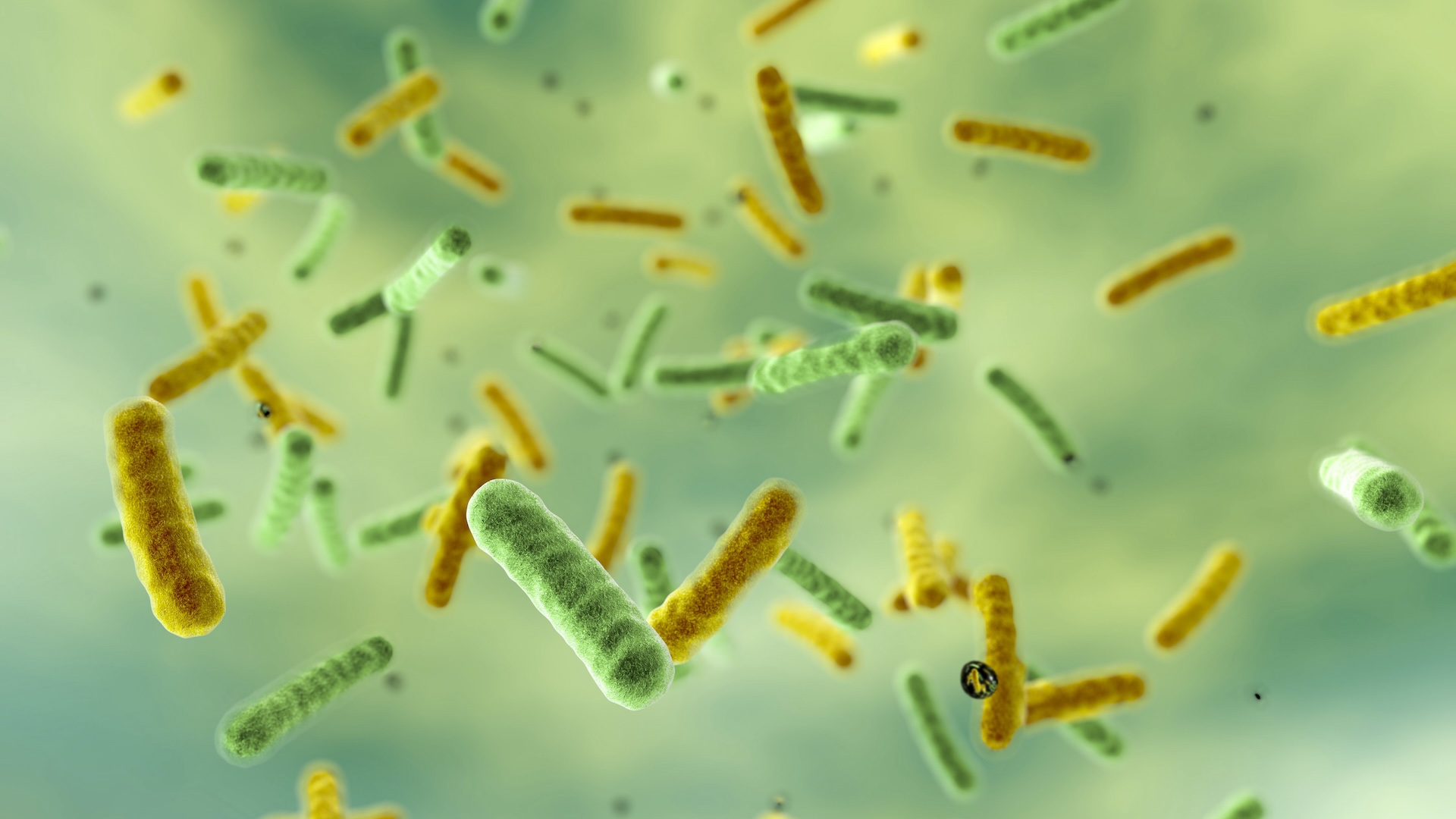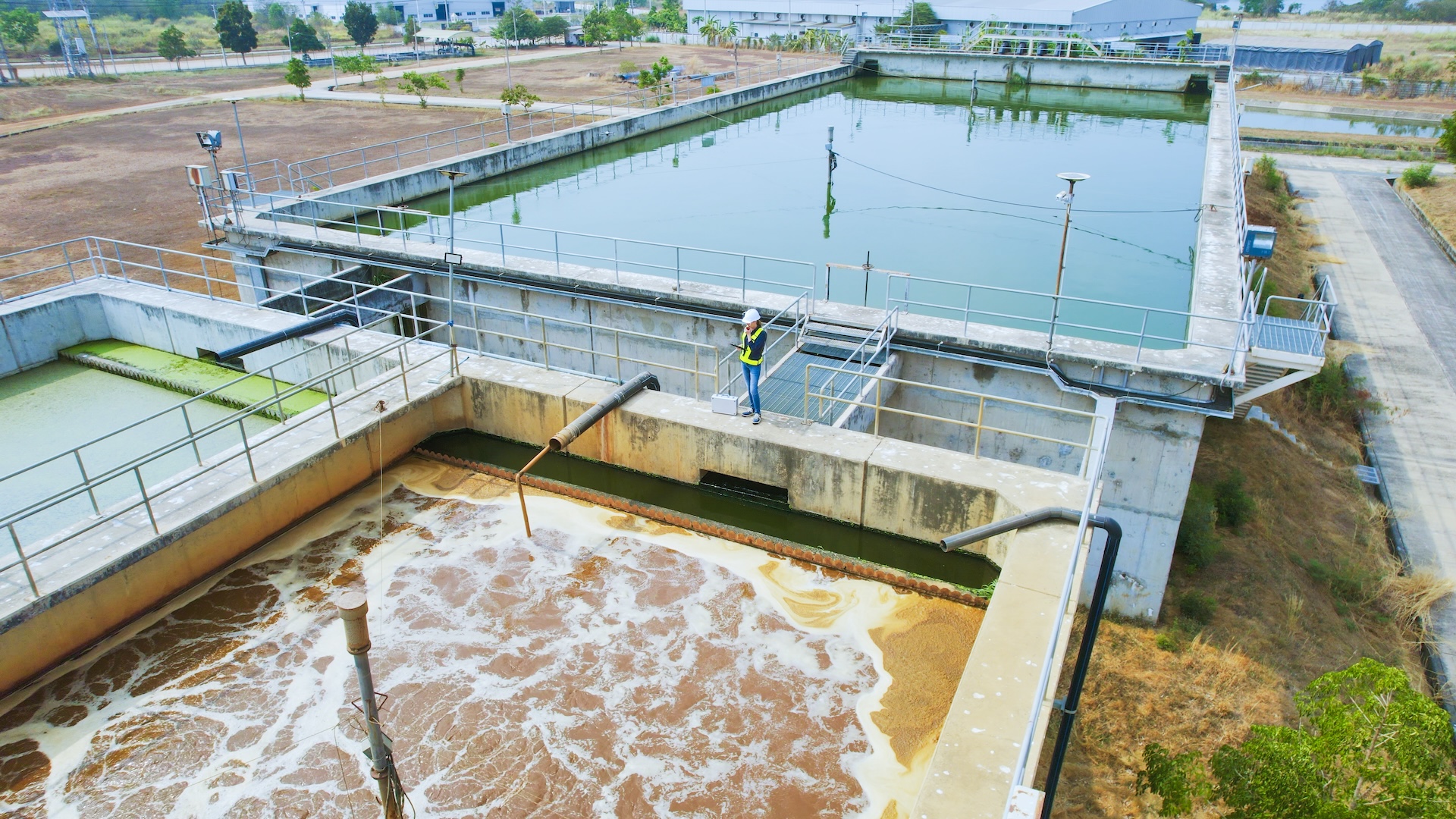Scientists uncover microbes that destroy 'forever chemical' pollutants
Little is known about the fate of PFAS in our environment, but new research finds that bacteria in wastewater can degrade specific types of "forever chemicals."

Certain bacteria can degrade the strong bonds that give "forever chemicals" their long shelf life, and this hints at potential low-cost treatments that could cleanse water of concerning PFAS.
PFAS, or perfluoroalkyl and polyfluoroalkyl substances, are human-made compounds found in many products. They contain strong chemical bonds that do not easily break down, making them difficult to remove from our bodies and the environment.
PFAS have been linked to a variety of health effects, and this past April, the Environmental Protection Agency set limits on the concentrations of six common PFAS in drinking water. This move highlighted a need for effective ways to clean up polluted waters.
Now, in a study published July 17 in the journal Science Advances, researchers reported for the first time that four species of Acetobacterium can degrade the bonds in some PFAS. This includes unsaturated PFAS, whose chemical structure makes them easier to break down than so-called saturated PFAS. Examples of these chemicals include PFMeUPA and FTMeUPA, which are not yet regulated by the EPA.
Related: PFAS 'forever chemicals' to officially be removed from food packaging, FDA says
"PFAS degradation using microbes is one of the most sought-after technologies in wastewater treatment and waste management," Nirupam Aich, an associate professor of engineering at the University of Nebraska-Lincoln who was not involved in the research, told Live Science in an email.
There are already some effective approaches to treating PFAS, including filtration and heat treatment. However, using biological approaches involving bacteria could have unique advantages. According to the study authors, the approach could be low cost and easily injected into groundwater beneath the Earth's surface, where many existing treatments are challenging to apply. Groundwater supplies about one-third of U.S. drinking water.
Get the world’s most fascinating discoveries delivered straight to your inbox.
The microbes highlighted in the new study break down carbon-fluorine bonds in some unsaturated PFAS. This process, known as defluorination, is driven by enzymes that split the chemical bonds, thus releasing fluoride atoms. These atoms would usually kill bacteria. But the researchers found that the Acetobacterium species have specialized channels that pump fluoride out of their cells and into the environment, enabling the bacteria to survive.
This may be part of a defense mechanism the bacteria evolved to detoxify compounds that would otherwise kill them, senior study author Yujie Men, an associate professor in the Department of Chemical and Environmental Engineering at the University of California (UC) Riverside, told Live Science in an email.
After pinpointing the defluorinating enzymes, the team scoured genomic databases to see if other Acetobacterium also had the same enzymes and pumps. They found defluorinating Acetobacterium in wastewater samples from North America, Europe and some parts of Africa and Asia. Additional clues hint that they may also be found in soil and groundwater, the study authors noted. Acetobacterium species are commonly found in wastewater, but little else is known about them and their defluorinating enzymes, Men said.
Related: Is drinking rainwater safe?

In previous work, Men and colleagues identified other bacteria that could break down the carbon-chlorine bonds found in some PFAS, triggering a reaction that dechlorinated and then destroyed the forever chemicals. The scientists' more recent finding adds to the number of known PFAS compounds that can be degraded by microbes.
This line of research could guide the search for more PFAS-degrading bacteria, leading to the discovery of new enzymes and the development of biotechnologies that accelerate these natural processes, Men said.
Microbial degradation of PFAS usually refers to using microbes in wastewater treatment to degrade PFAS prior to the water being disinfected and returned to the drinking water supply, Aich said. The major challenge of this approach has been the rarity of microbes that can break down the carbon-fluorine bonds. Even if microbes are able to degrade the chemicals, the rate of degradation can be slow.
This study is one of the first to provide insights into the specific mechanisms and bacterial enzymes that could be isolated and improved to increase those degradation rates, Aich said.
The researchers are now working on material-microbe interfaces that combine the defluorination ability of bacteria with materials that enhance the breakdown of PFAS. The properties of these materials change in response to electrical fields, and this enables them to destroy any byproducts leftover by the bacterial enzymes, said Chong Liu, an associate professor of chemistry and biochemistry at UCLA who led the research on interfaces. Thus, material-microbe interfaces provide a swift one-two punch to PFAS, Liu told Live Science in an email.
More research is needed to unpack the exact biochemistry of the defluorinating enzymes and their potential effect on larger scales, Men said.
"It is very unlikely that individual microbes could become a global solution to PFAS contamination," she noted. Nonetheless, their work points to avenues for using bacteria in biotechnologies that could work alone or in combination with other approaches.
Ever wonder why some people build muscle more easily than others or why freckles come out in the sun? Send us your questions about how the human body works to community@livescience.com with the subject line "Health Desk Q," and you may see your question answered on the website!

Miriam Bergeret is a science writer and editor based in Toronto, Canada. Miriam holds a master's degree in laboratory medicine and pathobiology from the University of Toronto, where she also studied science journalism and communication. She has worked with research scientists, scientific journals, nonprofit organizations, research institutes, science magazines and more. Also a published knitting pattern designer, Miriam enjoys creating new outfits for her Italian Greyhound, Theo.
